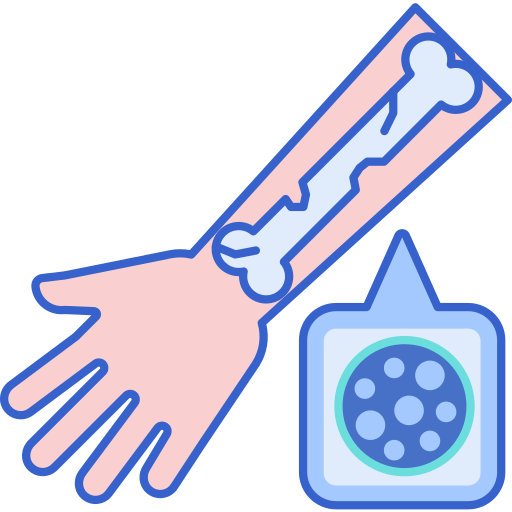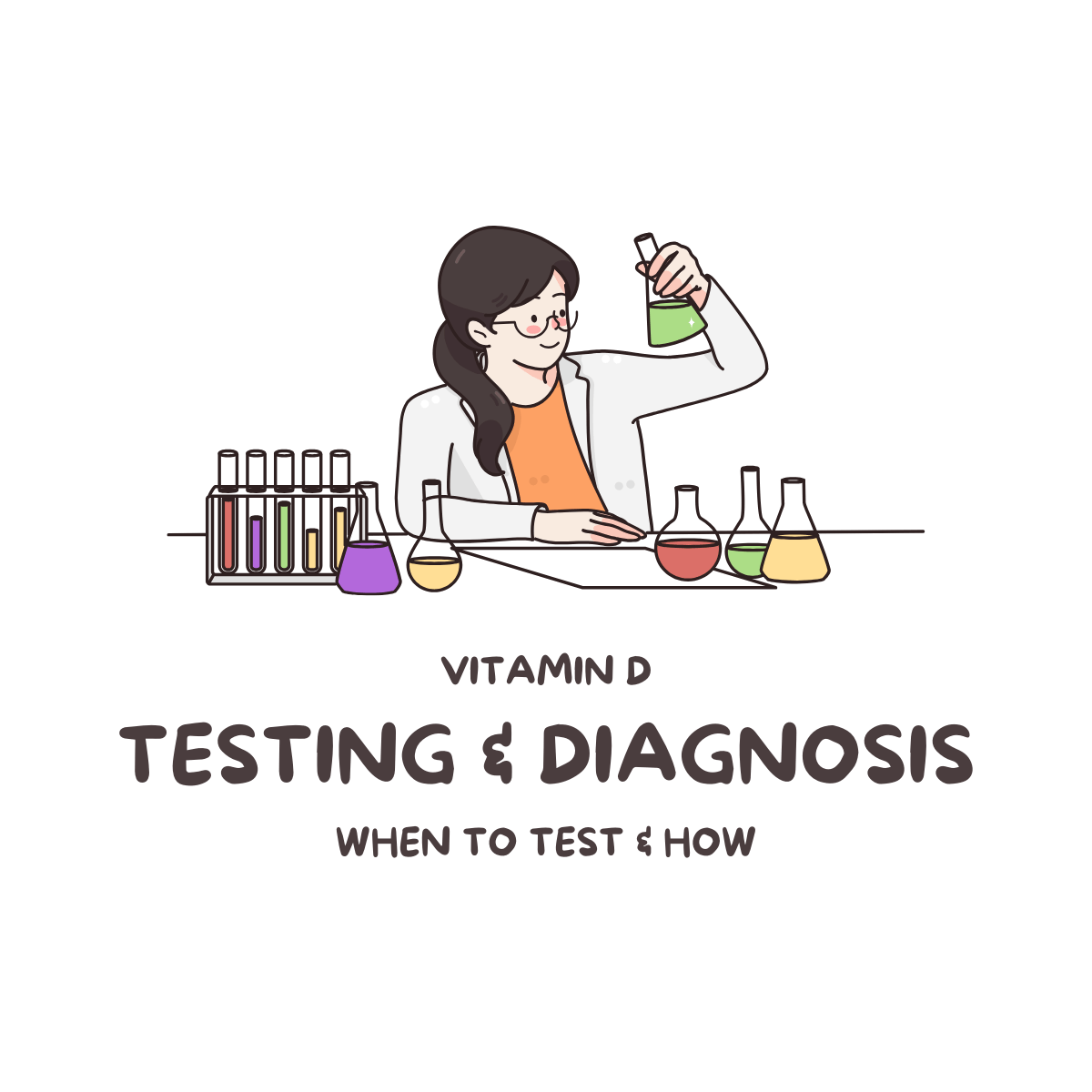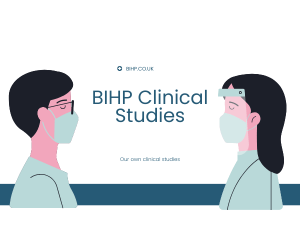Folks suffer from Vitamin D Deficiency more than they think. Vitamin D often feels like the sunshine of the supplement aisle. It’s there, waiting quietly for its moment to shine – yet many of us underestimate its importance.
Despite the seemingly endless public health campaigns urging people to get their vitamins, vitamin D tends to get overlooked.
Why? Possibly because the human body can create it from sunlight.
Yet for myriad reasons, not all of us get enough. Let’s pull back the curtain on this crucial nutrient and unravel the ins and outs of vitamin D deficiency.
The Role of Vitamin D in the Body
Vitamin D is like a conductor in an orchestra, ensuring that various systems work together in harmony. Its primary function is to regulate calcium and phosphorus levels in the bloodstream, facilitating the mineralisation process that keeps your bones strong and healthy. But its job doesn’t stop there.
Vitamin D also supports immune function, helps reduce inflammation, and has been associated with healthy cell growth.
Think of vitamin D as a master key that unlocks many of your body’s vital functions. Lacking it can create a domino effect, where one system falters and triggers issues elsewhere.
This interconnectedness is the reason vitamin D deficiency can manifest in such a wide range of symptoms.
Different Types of Vitamin D
There are two main forms of vitamin D relevant to humans: vitamin D2 (ergocalciferol) and vitamin D3 (cholecalciferol). Vitamin D2 typically originates in plant sources, such as certain mushrooms, while vitamin D3 is found in animal-based foods and is also synthesised in your skin through sun exposure. Though both can raise vitamin D levels in the body, vitamin D3 is more efficient at doing so over the long term.
Why We Need Vitamin D
 Bone Health
Bone Health
Remember being told to drink your milk for strong bones? Vitamin D is the nutrient that helps your body actually use the calcium you get from dairy or other foods. Without sufficient vitamin D, calcium absorption can be severely limited. Imagine trying to water a garden with a kinked hose – you might be providing the resource, but it won’t flow correctly without the right conditions. That’s essentially what happens to your bones when there isn’t enough vitamin D: they miss out on their vital supply of calcium.
 Immune Function
Immune Function
Your immune system is like a personal army defending you against invaders such as viruses and bacteria. Vitamin D plays an integral role in equipping this army with the necessary weaponry. It helps immune cells identify and destroy pathogens, making it a vital nutrient in your body’s daily battle against infections. Studies have found correlations between low vitamin D levels and increased susceptibility to colds, flu, and even autoimmune conditions.
Causes of Vitamin D Deficiency
Limited Sun Exposure
One of the body’s most significant natural sources of vitamin D is sunlight. Ultra-violet B (UVB) rays trigger a chemical reaction in the skin that produces vitamin D3. However, modern lifestyles often keep us indoors far more than our ancestors. Desk jobs, busy schedules, and a digital world all mean less direct sun contact. Moreover, as beneficial as sunscreen is for reducing skin cancer risk, it also blocks UVB rays, inadvertently limiting vitamin D production.
Geographical Factors
If you live in regions far from the equator, you’re likely to experience fewer hours of strong sunlight, especially during winter months. People in higher latitudes often have reduced vitamin D levels because their bodies aren’t receiving enough UVB rays. This is why you might see a spike in ailments like Seasonal Affective Disorder (SAD) in colder, darker climates – while often linked to light exposure, vitamin D deficiency might play a concurrent role.
Cultural and Lifestyle Factors
Cultural norms such as wearing modest clothing that covers most of the skin can reduce sunlight absorption. Moreover, busy urban lives lead many of us to spend the bulk of our time indoors at work or at home. Even when we do step outside, we might be shaded by tall buildings, wear hats or heavy sunblock, or simply stay for only a brief period. Over time, all these factors compound, making vitamin D deficiency a common concern.
Dietary Shortcomings
While our bodies can create vitamin D from sunlight, dietary intake remains an important piece of the puzzle. Fatty fish, egg yolks, fortified dairy, and other enriched foods are good sources. Yet, many diets around the world do not emphasise these items enough. Vegan or vegetarian diets, especially those lacking fortified foods, can further increase the risk of deficiency.
Health Conditions Affecting Absorption
Certain disorders like coeliac disease, Crohn’s disease, or cystic fibrosis can damage the gut or reduce its ability to absorb nutrients, including vitamin D. Similarly, liver and kidney conditions may affect the body’s ability to convert vitamin D into its active form. If you suspect any underlying health issues, it’s advisable to check in with a healthcare professional for tailored advice.
Symptoms and Warning Signs
 General Fatigue and Muscle Weakness
General Fatigue and Muscle Weakness
Do you ever wake up feeling like you’ve barely slept, even if you logged a decent number of hours? Or do you find your muscles tire after minimal exertion? Persistent fatigue can be one of the earliest signs of vitamin D deficiency. While it’s often attributed to a hectic lifestyle, overlooking low vitamin D levels can keep you in a cycle of exhaustion.
 Bone and Joint Pain
Bone and Joint Pain
Aches and pains that seem to appear without explanation might be your body’s way of waving a red flag. Vitamin D deficiency can contribute to bone and joint discomfort, especially in the lower back, knees, and hips. Over time, chronic deficiency raises the risk of more severe conditions like osteoporosis, so it’s vital to heed these warning bells early.
 Mood Changes
Mood Changes
Mood swings and irritability can be subtle hints that something is amiss internally. Lower vitamin D levels have been linked to depressive symptoms, anxiety, and a sense of feeling “off.” Because vitamin D receptors exist throughout the body, including areas of the brain that influence mood regulation, any deficiency can result in notable psychological shifts.
Health Risks Linked to Vitamin D Deficiency
 Osteoporosis and Osteopenia
Osteoporosis and Osteopenia
Osteoporosis is a condition where bones lose their density and become more prone to fractures. Osteopenia, often considered a precursor to osteoporosis, indicates lower-than-normal bone density that hasn’t yet reached the threshold for a full diagnosis. Both conditions are closely tied to insufficient vitamin D, as the nutrient’s role in calcium absorption is critical for maintaining strong bones. Over time, if your bones aren’t being properly fortified, even a minor fall can lead to breaks.
 Increased Infection Risk
Increased Infection Risk
Think of vitamin D as a security checkpoint for pathogens attempting to infiltrate your body. With insufficient vitamin D, your immune system can struggle to mount a robust defence. Studies have found that individuals with deficient vitamin D levels frequently experience higher rates of infections such as influenza and respiratory tract infections. Although no single nutrient guarantees invincibility, maintaining balanced vitamin D levels acts as an essential shield.
 Chronic Conditions
Chronic Conditions
High blood pressure, type 2 diabetes, and autoimmune disorders have all been explored in the context of vitamin D deficiency. Researchers are still piecing together the exact mechanisms, but one possibility is that vitamin D’s anti-inflammatory properties play a pivotal role in preventing or alleviating these conditions. In simpler terms, if your body is frequently fighting inflammation without enough vitamin D, it can be easier for chronic illnesses to take root.
Testing and Diagnosis
When to Get Tested
A simple blood test can confirm if you’re short on vitamin D. But when is the right time to get checked? If you live in regions with limited sunshine, have dark skin pigmentation, or follow a strict vegan diet, consider testing as a proactive measure. Those who often feel tired, have persistent aches, or experience frequent infections might also want to investigate vitamin D levels. Better to pinpoint the issue early than to let it progress into more severe complications.

Types of Vitamin D Tests
The most common test is the 25-hydroxy vitamin D test, often abbreviated as 25(OH)D. This test measures the amount of both vitamin D2 and D3 in your bloodstream, providing a broad snapshot of your current status. In some instances, a doctor may also check 1,25-dihydroxy vitamin D levels, although this is less common and usually reserved for specific medical conditions.
Correcting Vitamin D Deficiency
Sunlight and Safe Exposure
Sunlight is the most natural way to boost vitamin D levels. Aim for short, daily bursts of sun exposure on your arms and legs without sunscreen. The exact duration varies based on factors like skin tone, time of day, and geographic location, but 10–30 minutes can be a decent starting point. However, don’t forget the golden rule: once your recommended time is up, protect your skin from excessive UV damage by covering up or applying sunscreen.
Dietary Sources of Vitamin D
Nature provides a handful of high-quality vitamin D foods. Oily fish such as salmon, mackerel, and sardines are particularly rich, and don’t underestimate the humble egg yolk. Fortified dairy products can also lend a hand. If you’re a fan of mushrooms, opt for varieties exposed to ultraviolet light, as they can offer a decent boost of vitamin D2. Incorporating these foods regularly can help patch up nutritional gaps and sustain healthier levels.
Supplements
Supplements can be a convenient and efficient way to correct a deficiency, especially if sunshine and diet aren’t cutting it. Vitamin D3 supplements are often recommended for their superior absorption and retention rates. However, it’s wise to discuss the matter with a healthcare professional to determine the appropriate dosage and duration of supplementation.
Foods Rich in Vitamin D
Animal-Based Sources
- Salmon and Mackerel: These fish are swimming with vitamin D, particularly wild-caught varieties.
- Egg Yolks: The yolk is where you’ll find most of the nutrients, making eggs a versatile option.
- Liver: An acquired taste for some, but definitely packs a nutritional punch, including vitamin D.
- Fortified Dairy: Many milks, yoghurts, and cheeses have vitamin D added, a practical way to support daily intake.
Plant-Based Sources
- UV-Exposed Mushrooms: Some growers expose mushrooms to UV light to boost vitamin D2 levels.
- Fortified Plant Milks: Almond, soy, and oat milks often come with added vitamins.
- Fortified Cereals: Some breakfast cereals offer a handy serving of vitamin D, but always check the label.
Supplementing Vitamin D
Choosing the Right Supplement
Not all vitamin D supplements are created equal. Some are derived from lanolin (sheep’s wool), while others may be algae-based, making them suitable for vegans. Consider your dietary preferences, ethical considerations, and any allergies when selecting a supplement. It’s worth noting that vitamin D3 (cholecalciferol) is generally more effective at raising levels than vitamin D2 (ergocalciferol).
Recommended Dosages
Official guidelines vary, but a daily intake of 10 micrograms (400 IU) to 25 micrograms (1000 IU) is often suggested for maintenance in healthy adults. If you have a deficiency, you might need a higher dose temporarily under medical supervision. The body typically does a good job of eliminating excess vitamin D, but hypervitaminosis D can occur if you go overboard. Always stick to recommended guidelines.
Potential Side Effects
While vitamin D supplements are generally considered safe, an overabundance can lead to hypercalcaemia (too much calcium in the blood). Symptoms may include nausea, vomiting, confusion, and kidney issues. To avoid swinging from deficiency to excess, follow recommended dosages and keep an eye out for any unusual symptoms.
Lifestyle Adjustments
Balancing Indoor and Outdoor Activities
It’s all about moderation. Spending every waking moment indoors with curtains drawn is just as unhelpful as baking in the sun for hours without protection. Aim for a daily dose of sunshine when the UV index is moderate, usually in the morning or late afternoon. Even a short stroll can make a difference over time, both mentally and physically.
Combining Vitamin D with Other Nutrients
Pairing vitamin D with vitamin K2 is a winning formula for bone health. The idea is that vitamin D aids calcium absorption, while vitamin K2 helps direct calcium to your bones rather than letting it accumulate in arteries. Balanced meals rich in magnesium and calcium also create an environment that maximises vitamin D’s potential.
Myths and Misconceptions
“I Can Get Enough from Food Alone”
While some foods are indeed fortified or naturally high in vitamin D, they often aren’t sufficient to correct a deficiency on their own. Especially if you’re already low, you might need a combination of improved diet, increased sun exposure, and supplements to bring your levels up to a healthy range. Relying solely on diet is like trying to fill a bathtub with a slow trickle – possible, but it may take longer than you’d expect.
“I Must Spend Hours in the Sun”
Contrary to this popular myth, it doesn’t require tanning on a beach until you resemble a lobster to top up your vitamin D. In fact, prolonged unprotected sun exposure increases skin cancer risk. Experts generally say that short periods (10–30 minutes, depending on your skin tone) of midday sunlight can be sufficient for many people. It’s always a balancing act: reaping the benefits of sunshine without roasting yourself.
Preventive Measures
Routine Check-Ups
You wouldn’t neglect to check the oil in your car until it seizes up, so consider the same principle for your body. Regular blood tests can detect dwindling vitamin D levels before they cause harm. Paired with discussions about other aspects of your health, these check-ups can keep you one step ahead of any looming deficiency.
Awareness of Risk Factors
Awareness is everything. If you know you live in a sun-poor region, have darker skin, follow a vegan or vegetarian diet, or simply notice persistent fatigue, it’s time to be proactive. Low vitamin D doesn’t have to be a life sentence – being informed allows you to take the necessary steps to safeguard your health.
Special Populations
Children and Adolescents
Kids grow at lightning speed, which calls for an abundant supply of nutrients to form healthy bones. Paediatricians often recommend vitamin D supplements for infants, especially if they’re breastfed, since breast milk may not contain sufficient vitamin D. Later in childhood, a balanced diet combined with outdoor play can help keep deficiency at bay.
Ageing and Housebound Individuals
Ageing can reduce the skin’s ability to synthesise vitamin D, adding another layer of difficulty. Many older adults also spend more time indoors, especially if mobility is limited. This combination can lead to a persistent deficiency that worsens existing conditions like osteoporosis. For some older people, a supervised supplementation plan might be not just beneficial, but essential.
Pregnancy and Breastfeeding
Expectant and nursing mothers have increased nutrient demands to support their little ones. Vitamin D plays a role in foetal bone development and can also influence the child’s long-term health.
Many healthcare providers will recommend vitamin D testing and possibly supplementation throughout pregnancy and breastfeeding to ensure both mother and baby are adequately protected.
Conclusion
Final Thoughts
Vitamin D deficiency isn’t a trivial matter that you can simply brush off. It’s more like a nagging leak in your roof: ignore it, and you might end up with a costly repair bill down the line. By maintaining adequate levels of vitamin D, you can strengthen your bones, bolster your immune system, and potentially reduce the risk of various chronic conditions.
Moving Forward
The good news is that replenishing vitamin D levels is not an insurmountable task. A bit of sun, some dietary tweaks, and the right supplements can go a long way in turning the tide on deficiency.
While individual needs vary, staying vigilant and proactive can make a world of difference in how you feel daily. So why not start by making small changes right now?
Sometimes, a quick walk in the sunshine or adding a serving of oily fish to your weekly menu is all it takes to begin the journey to better health.
5 Unique FAQs
- Is vitamin D deficiency reversible?
Yes, in most cases it’s entirely reversible through sun exposure, dietary adjustments, and supplements. The key is early detection and a consistent approach to boosting levels. - Can children develop vitamin D deficiency if they play outside regularly?
They can, although the risk is lower. Factors like skin tone, sunscreen use, and geography still play significant roles. Regular check-ups remain a good idea to ensure a child’s levels are within a healthy range. - Does being of a higher weight affect vitamin D status?
Research suggests that higher body fat can sequester vitamin D, making it less bioavailable. This often means heavier individuals may need higher supplementation or more consistent sun exposure to maintain normal levels. - Can I get too much vitamin D from the sun alone?
Generally, your skin regulates vitamin D synthesis, preventing an overdose from sunlight. However, unprotected sun exposure poses other risks like sunburn and skin cancer, so caution is still necessary. - Are there any medications that interfere with vitamin D absorption?
Certain medications, like corticosteroids or weight-loss drugs, can affect how vitamin D is absorbed or metabolised in the body. If you’re on regular medication, it’s wise to discuss vitamin D considerations with a healthcare professional.





